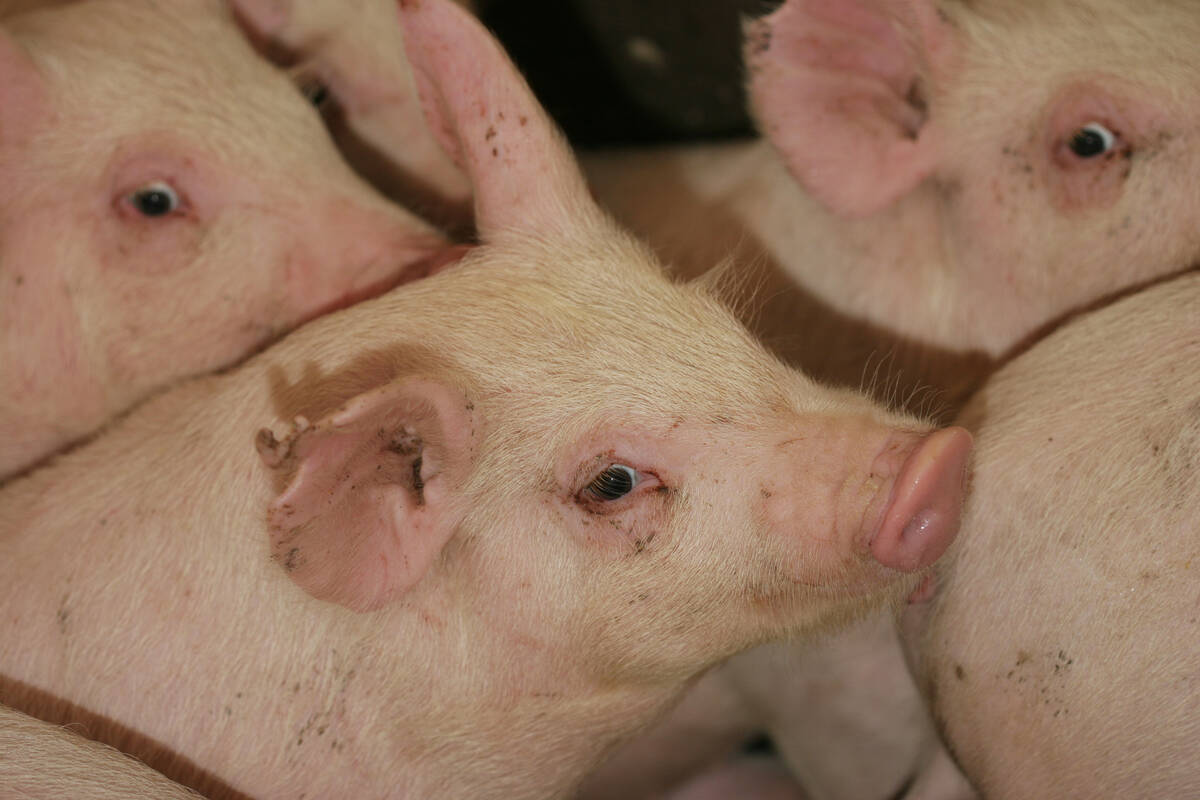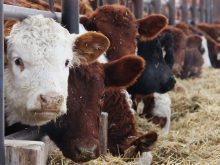The Australian cattle industry has boomed recently, due in part to the discovery of BSE in North America, which shut Canada and the U.S. out of Asian markets. Yet all is not rosy. Scorching drought has taken a toll on cattle, grazing lands and crops.
Western Producer reporter Barbara Duckworth recently travelled to Australia to gauge the state
of agriculture there and find out how the situation affects Canadian producers.
FORBES, Australia – The most modern auction market in the world is found outside the small Australian town of Forbes, three hours north of Sydney.
Read Also

The Western Producer Livestock Report – September 25, 2025
The U.S. national live price average for barrows and gilts was $81.21 Sept. 17. It was $78.37 Sept. 9. U.S. hogs averaged $106.71 on a carcass basis Sept. 17, up from $106.10 Sept. 9.
Guests from North America, Brazil and Europe have made the journey to the former gold mining town to see how one facility can move more than 2,000 head per day with little fuss.
Designed to combine animal welfare with full electronic identification, the concept spent 10 years on the drawing board, said manager Kristy Hartwig.
The yard is owned and operated by the Forbes shire council and cost almost $9 million Cdn to build. The shire population is only about 4,000 people and the town of Forbes is about 8,000 so it was a major project for taxpayers.
Not everyone in the community agreed such a facility was needed but others gave it their full support. The land has already been levelled next door to build a similar operation for sheep and pigs.
“It generates so much income to our community, but unless you have a direct link to that, some people can’t see the positive impact and people ask what we are spending so much money for,” Hartwig said.
“As a small rural community we would like to have more business and industry.”
Cattle are beginning to arrive from beyond Forbes’ normal trading area as the facility’s reputation spreads, and more buyers are attracted every week. At times, cattle prices average 20 cents a kilogram more than other facilities.
“Our agents have really got a good reputation throughout the state so all those combined bring the cattle in,” Hartwig said.
The 20 acre facility is turning a profit and the shire takes a smaller commission than a private facility because councilors see it as a public service.
In return, the municipality ensures all systems are working properly, which includes transmitting all identification information via fibre optic cable to the National Livestock Identification System database managed by Meat and Livestock Australia in Sydney.
There were growing pains as salespeople adjusted to the technology.
“When you have got agents who walked one way for 20 years, then you start telling them to walk the other way, it can be interesting,” she said.
The agents are independents whose duties are similar to order buyers, but they also auction off the cattle and settle with buyers. They must also ensure cattle are properly identified with electronic tags. If tags are lost or fail to read, the agents must replace them.
Yard staff and agents must also check vendor declarations before sale time, which describe the cattle and where they came from and provide health records and other pertinent information.
Activity starts Sunday when 700 to 2,000 cattle move in for Monday’s sale.
The main sale area has open sides covered by a curved metal roof. The aerodynamic roof design controls temperature and also captures rain so that water can be used at the facility.
There are no steel pillars linking the roof to the floor, which means workers can do whatever is needed on the ground without running into poles.
Animal comfort combined with high technology is foremost.
“When you come in at 5 a.m. on Monday morning you’ll find 70 percent of the cattle lying down. They’re just really happy. They’re relaxed,” Hartwig said.
Parallel lines of small pens with curved corner posts are located on each side. The unique soft flooring is a deep layer of compacted sawdust, rice hulls and sand that absorbs moisture. Consequently, there is little smell from urine or manure. Barn employees also find fewer lameness problems compared to some yards where cattle are left to stand on concrete for long periods.
All the pens consist of interlocking gates so staff can clean the area and aerate the floors before the next sale.
Catwalks are suspended over the pens so buyers and sellers can have a close look at what is on offer. Cattle are moved from pen to pen to a central weigh station, where their digital information is read by six reader panels. The readers are attached to wooden walls because metal chutes interfere with transmission.
A sales agent also has a long handled reader wand to capture missing ear-tag numbers at the central station. If 10 animals proceed into the pen, 10 different numbers must be read. The readers may see the same number many times as cattle circulate in the pen but the computer only records the number once. If a tag fails to read, the animal is marked with paint and a new tag is placed in its ear.
A computer screen mounted beside the exit gate tells how many were in the group, total weight, average individual weight and how much they sold for as a group and as an individual. Sales are stated in kilograms and by cents, so for example, the stated price is 157 cents a kg rather than $1.57.
All work is done on foot because the overhead catwalks are too low for a person on a horse to pass through.
Most of the cattle are sold straight from the pen but a sales ring is available if anyone wants it. Purebred and special sales are also held.















